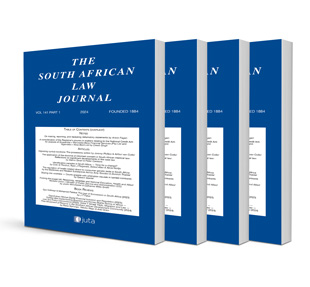The shareholder’s appraisal remedy under the Companies Act: How should the courts gauge ‘fair value’?

The shareholder’s appraisal remedy under the Companies Act: How should the courts gauge ‘fair value’?
Author: Maleka Femida Cassim
ISSN: 1996-2177
Affiliations: Professor of Law, Mercantile Law Department, University of South Africa
Source: South African Law Journal, Volume 141 Issue 2, p. 293-322
https://doi.org/10.47348/SALJ/v141/i2a3
Abstract
The appraisal remedy is the right of minority shareholders to demand that the company buy out their shares in cash, at a price reflecting their ‘fair value’, when they are aggrieved by certain triggering transactions that the majority shareholders have approved. The appraisal right is an American concept that was introduced into South African law when the Companies Act 71 of 2008 came into force. The most formidable challenge concerning the appraisal right is the meaning and interpretation of the key phrase ‘fair value’ and, coupled with this, the appropriate valuation methodology that the court ought to adopt when valuing the shares of dissenting minority shareholders. Two recent judgments of the High Court have considered these thorny issues for the first time. This article critically analyses the findings of the High Court in BNS Nominees (RF) (Pty) Ltd v Zeder Investments Ltd and BNS Nominees (RF) (Pty) Ltd v Arrowhead Properties Ltd, with a particular focus on the divergent approaches that the two cases adopt in gauging the ‘fair value’ of the dissenters’ shares and the judicial discretion to appoint an appraiser to value the shares. This is followed by a detailed discussion of the proper interpretation of the pivotal phrase ‘fair value’ in appraisal proceedings and of appraisal valuation methodology. This is done with reference to the legal position in comparable foreign jurisdictions such as the United States of America and Canada. Guidelines are also suggested for the South African courts to follow when gauging the ‘fair value’ of shares in appraisal cases.